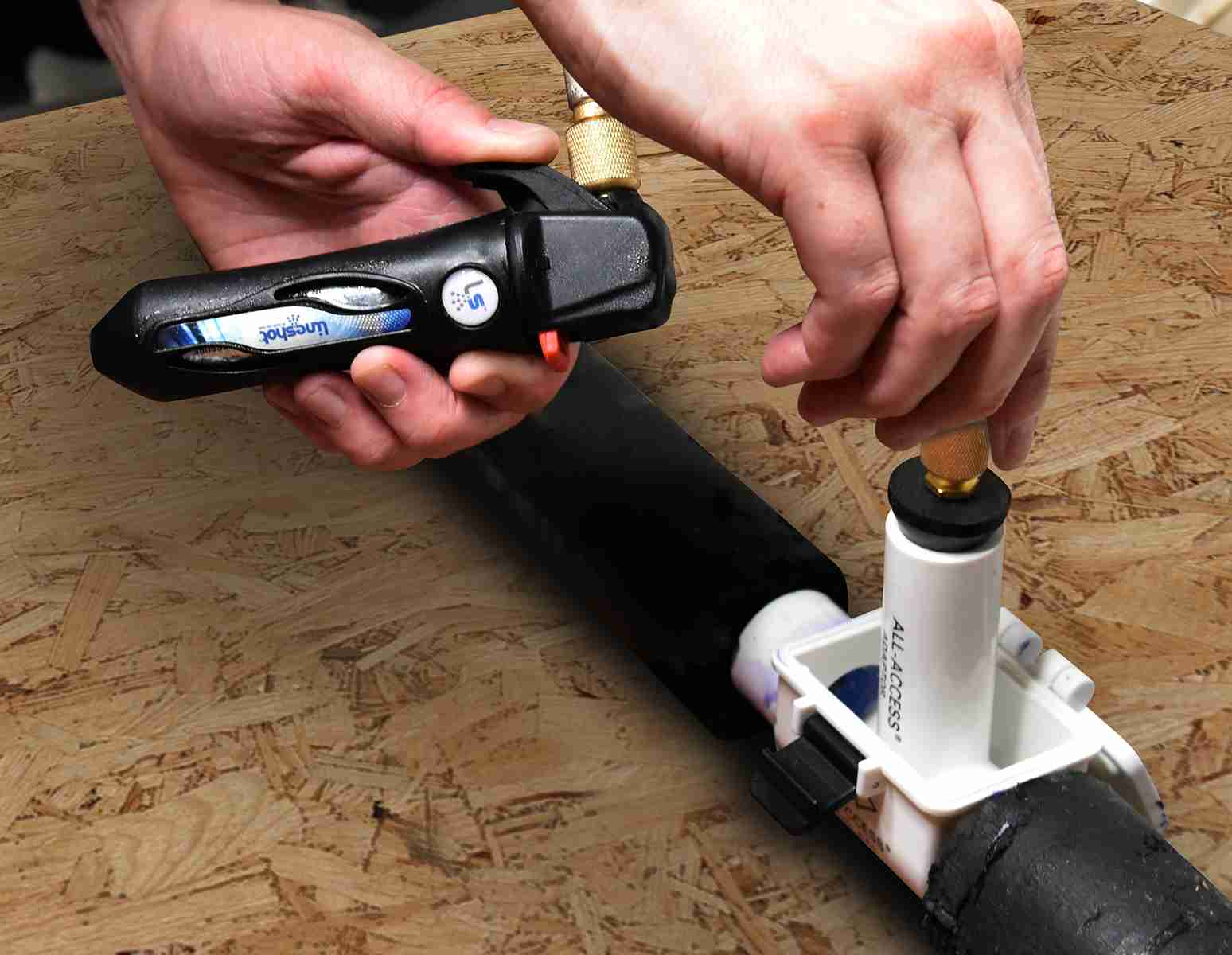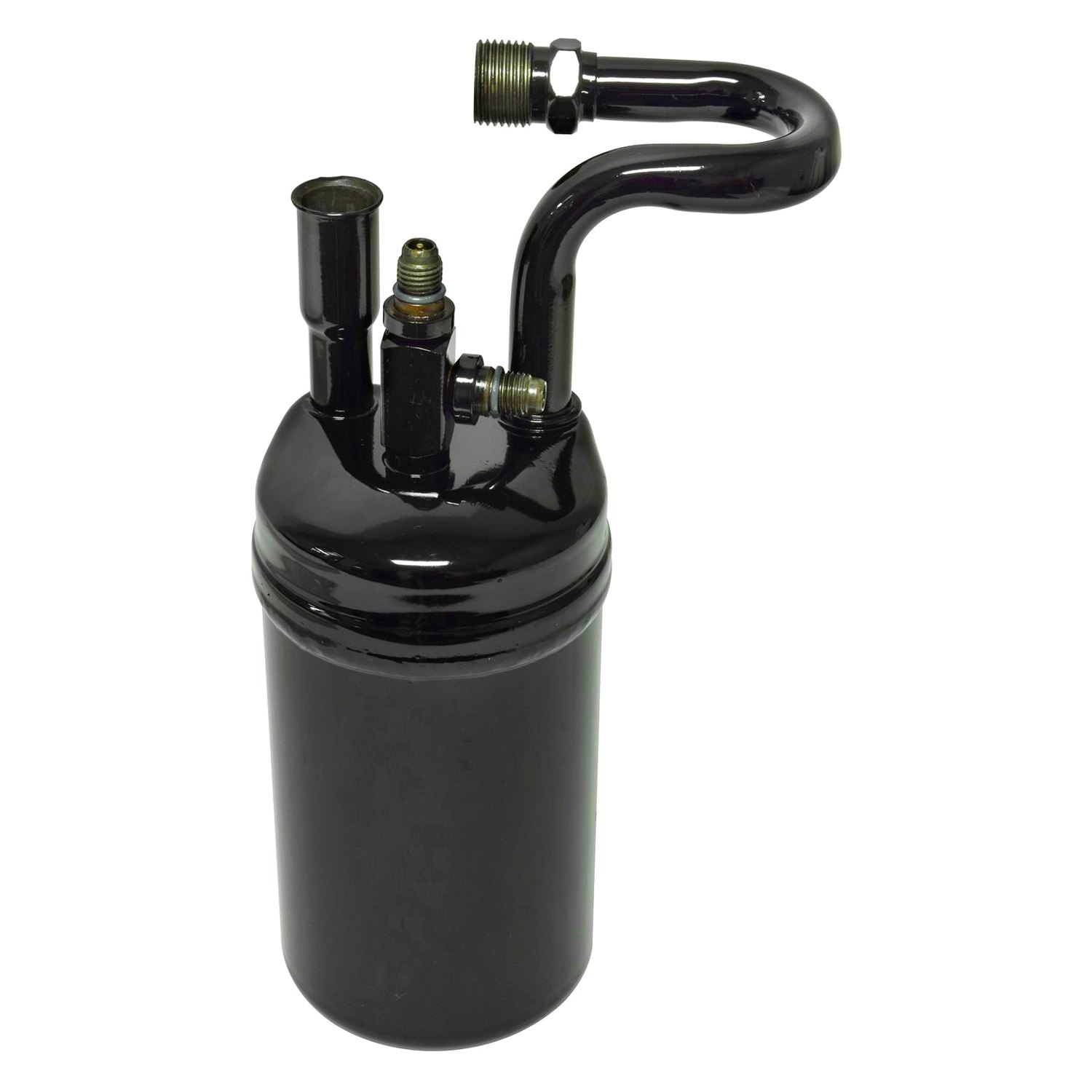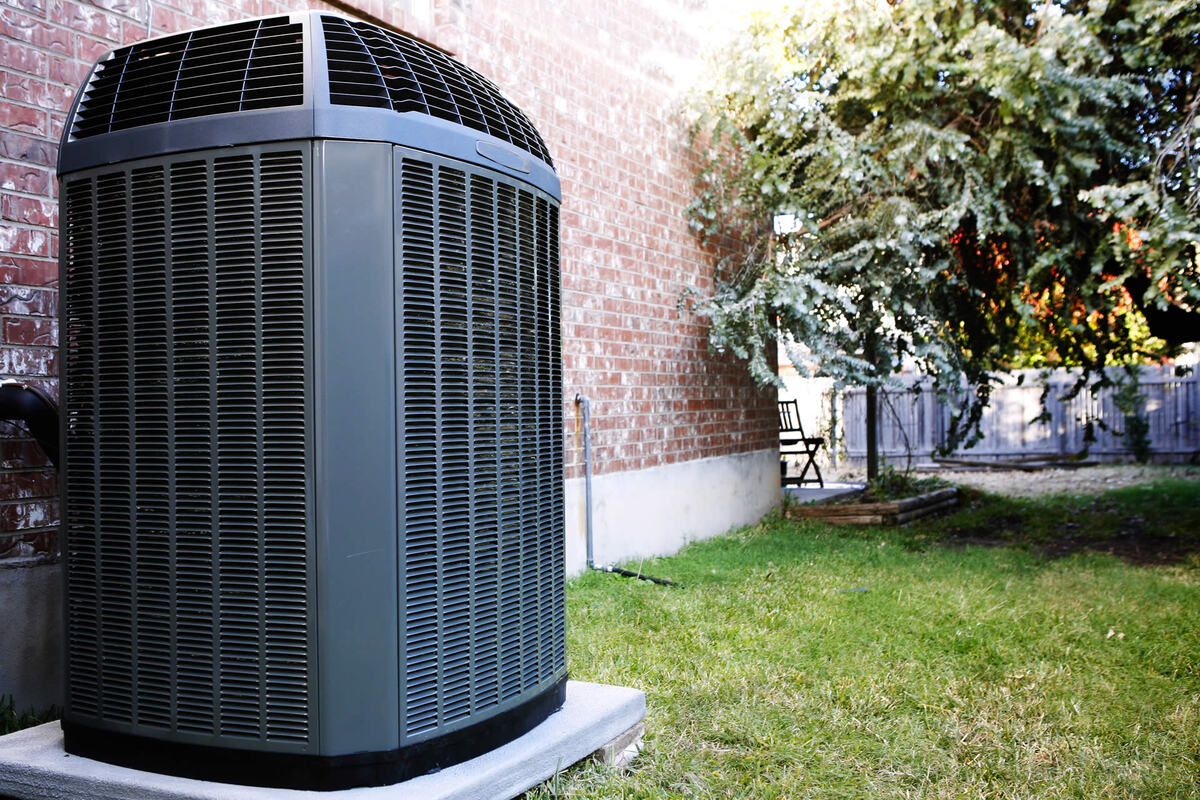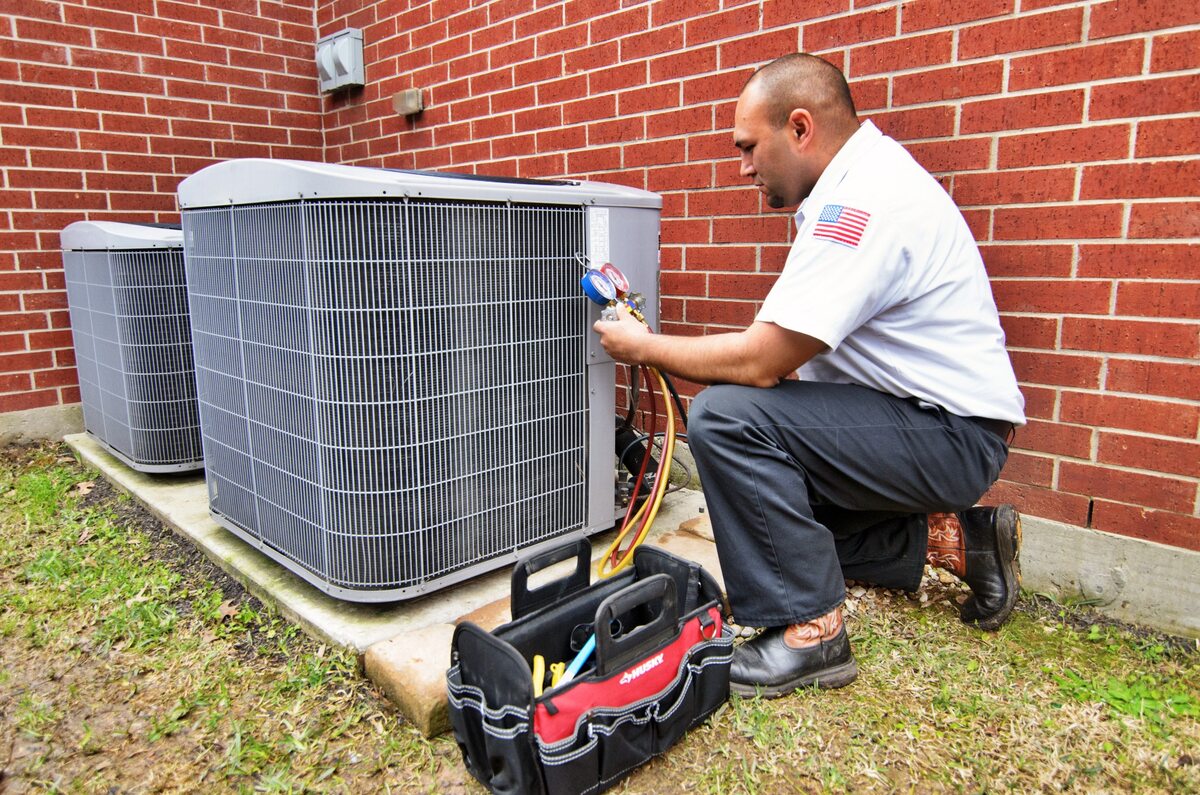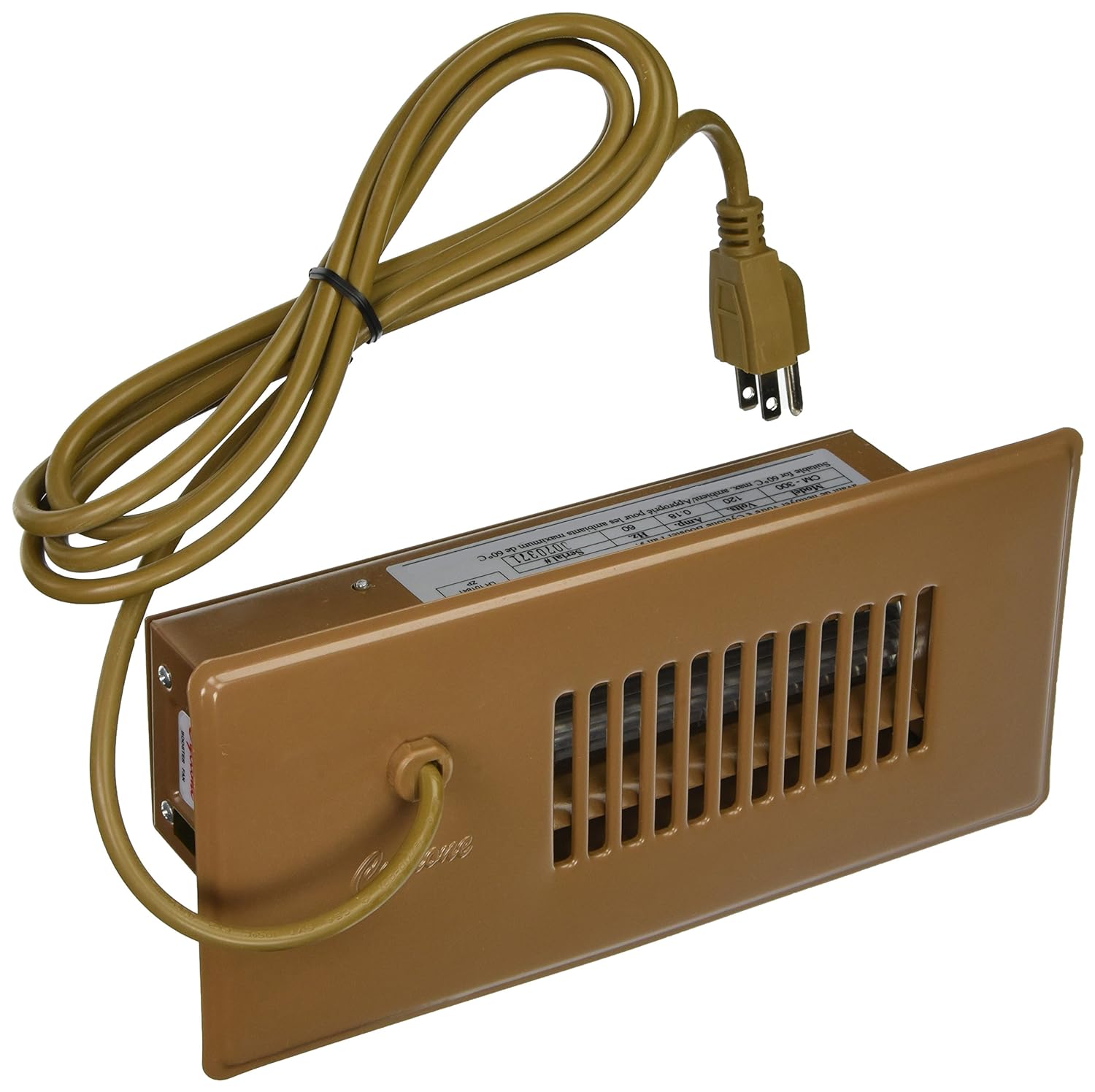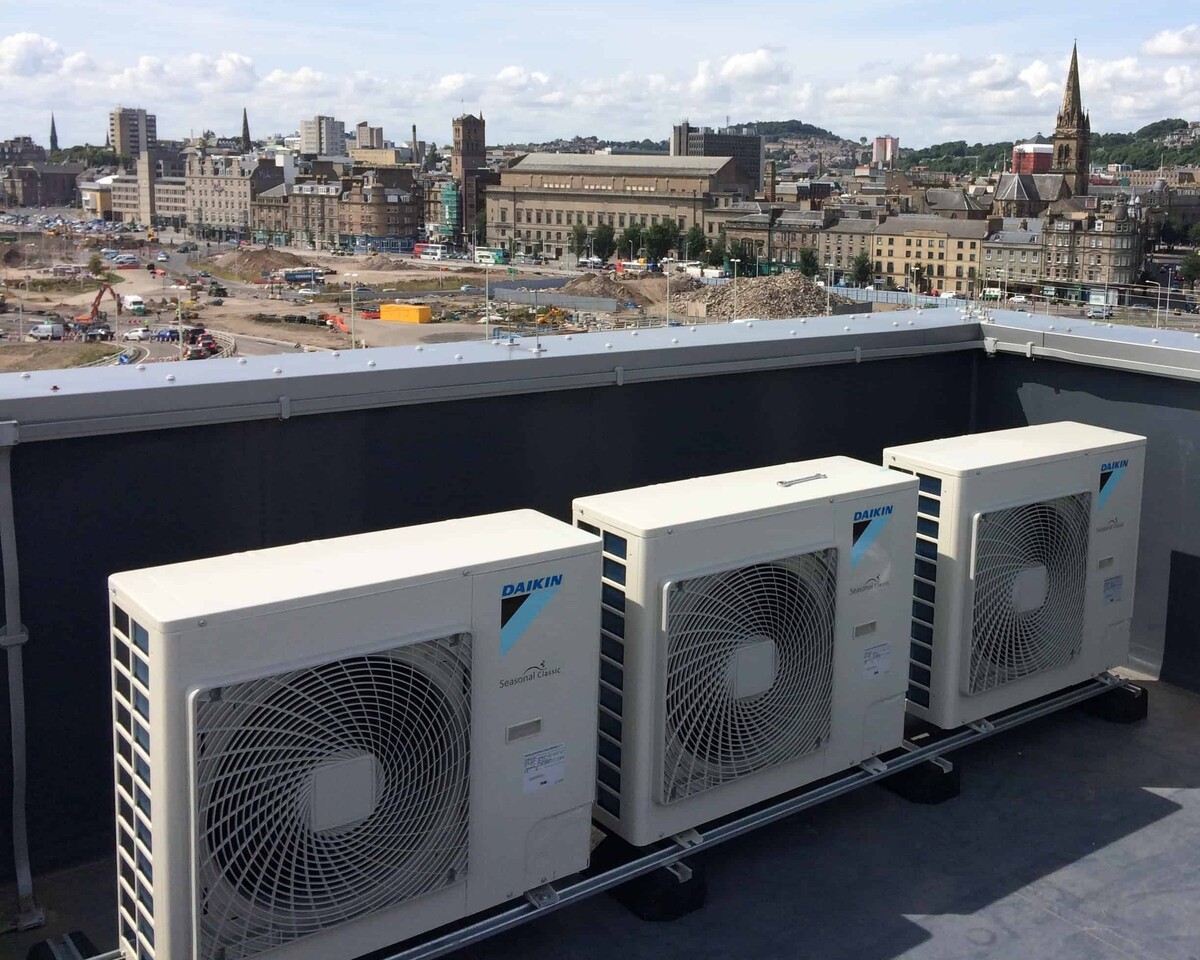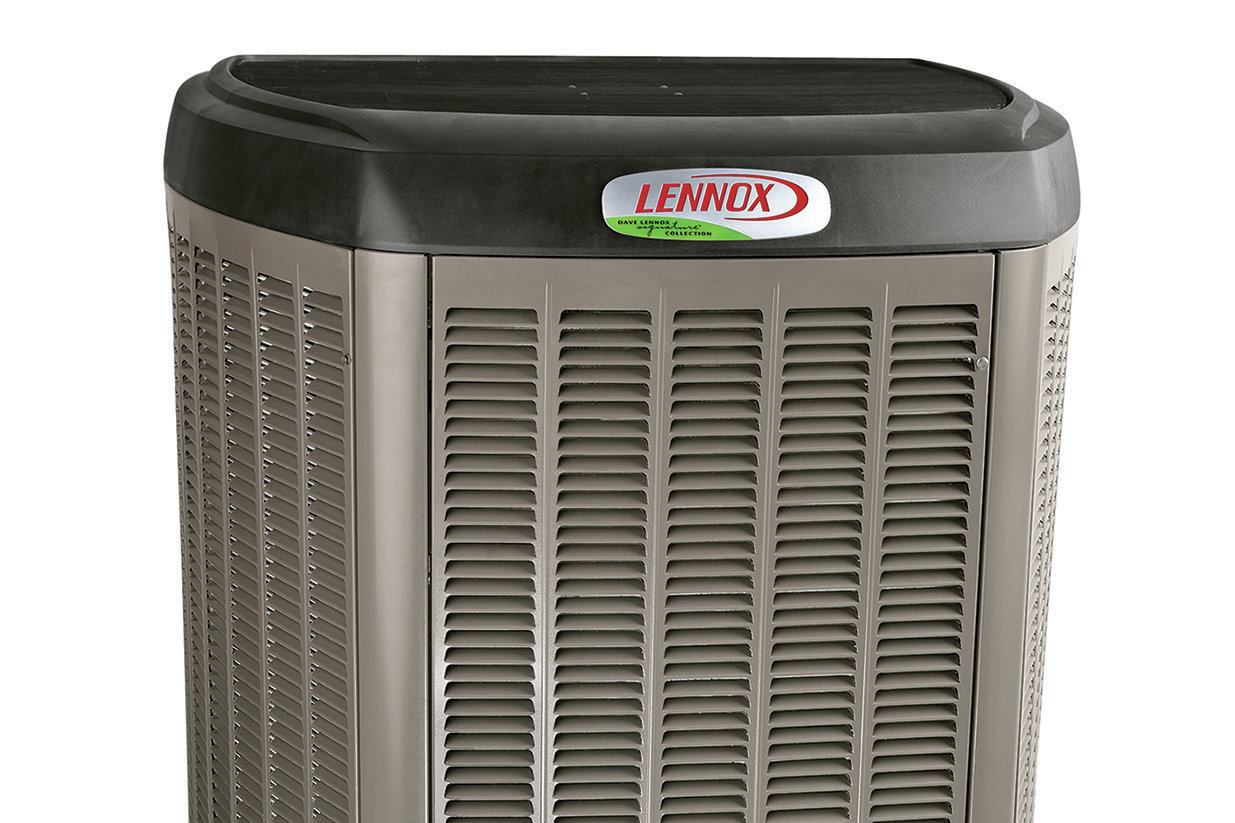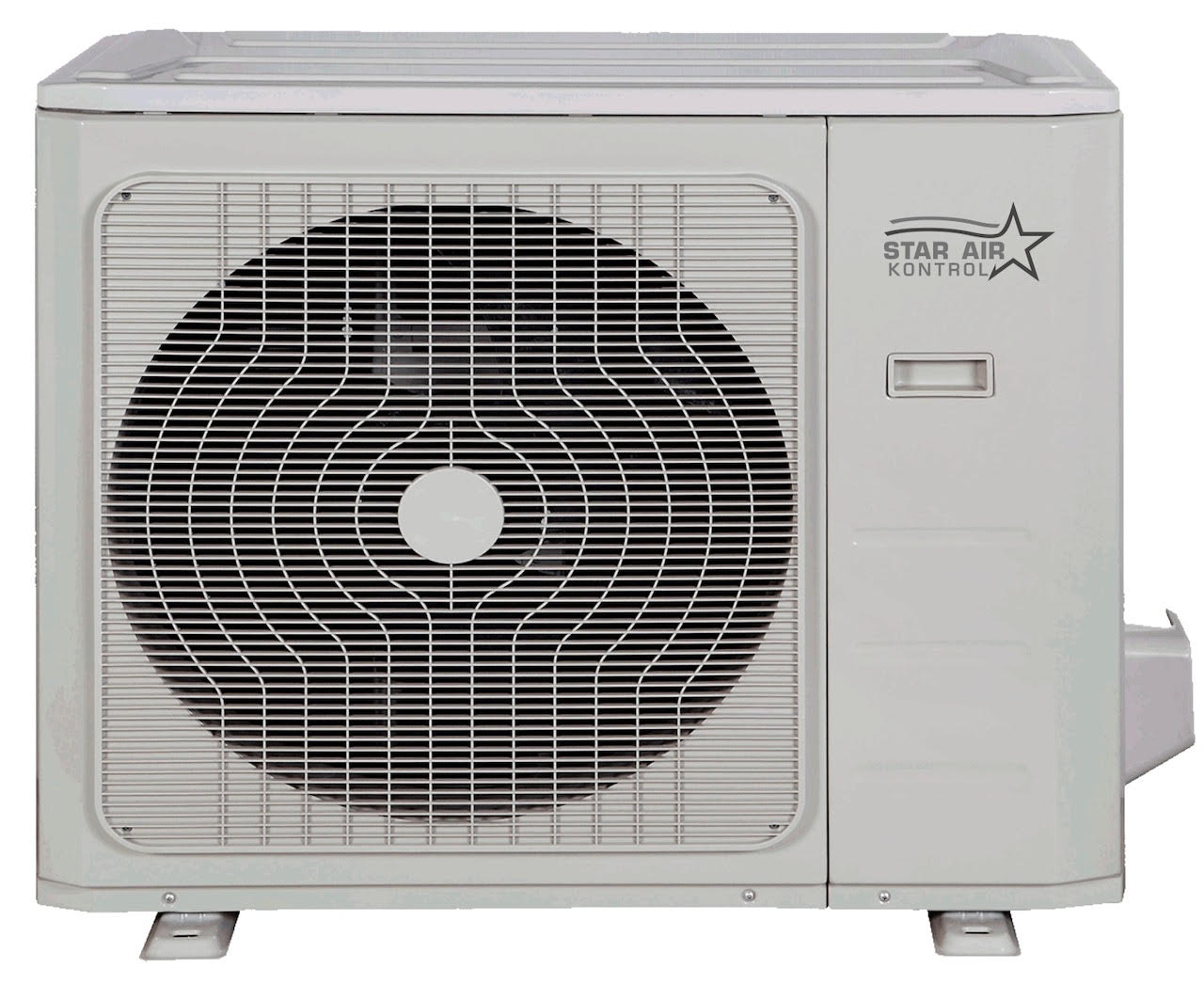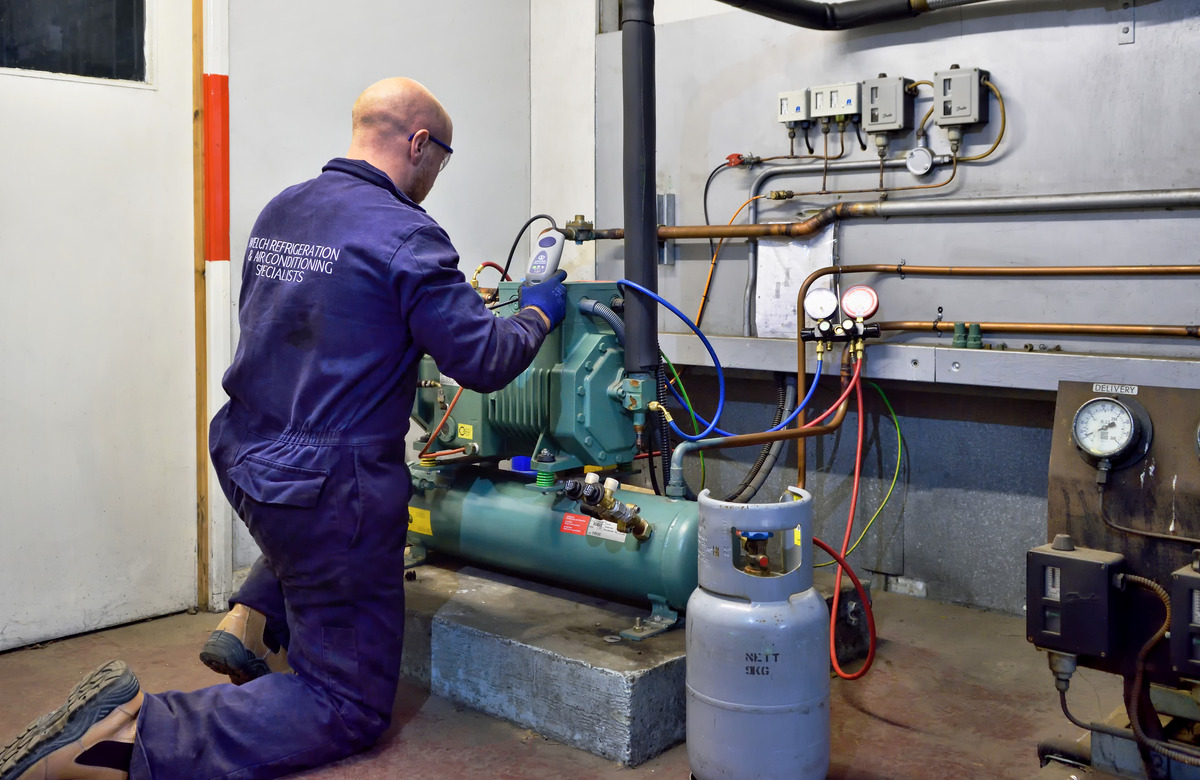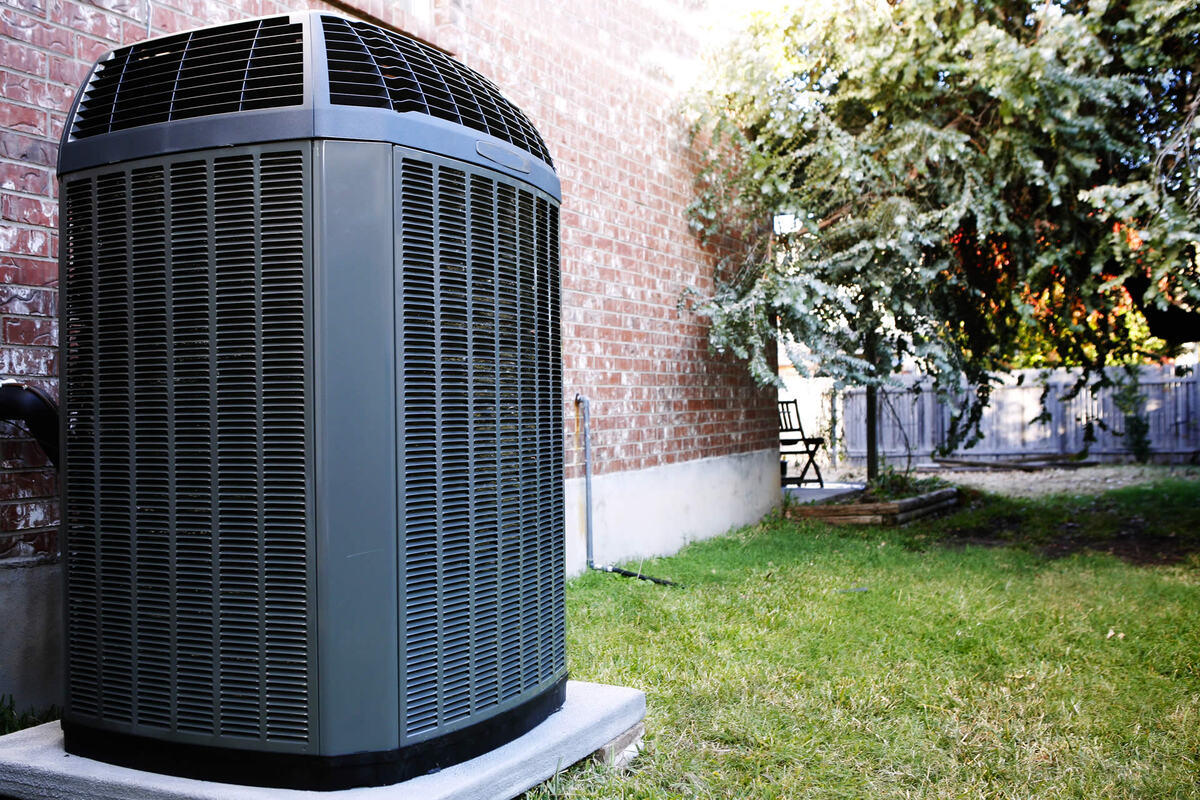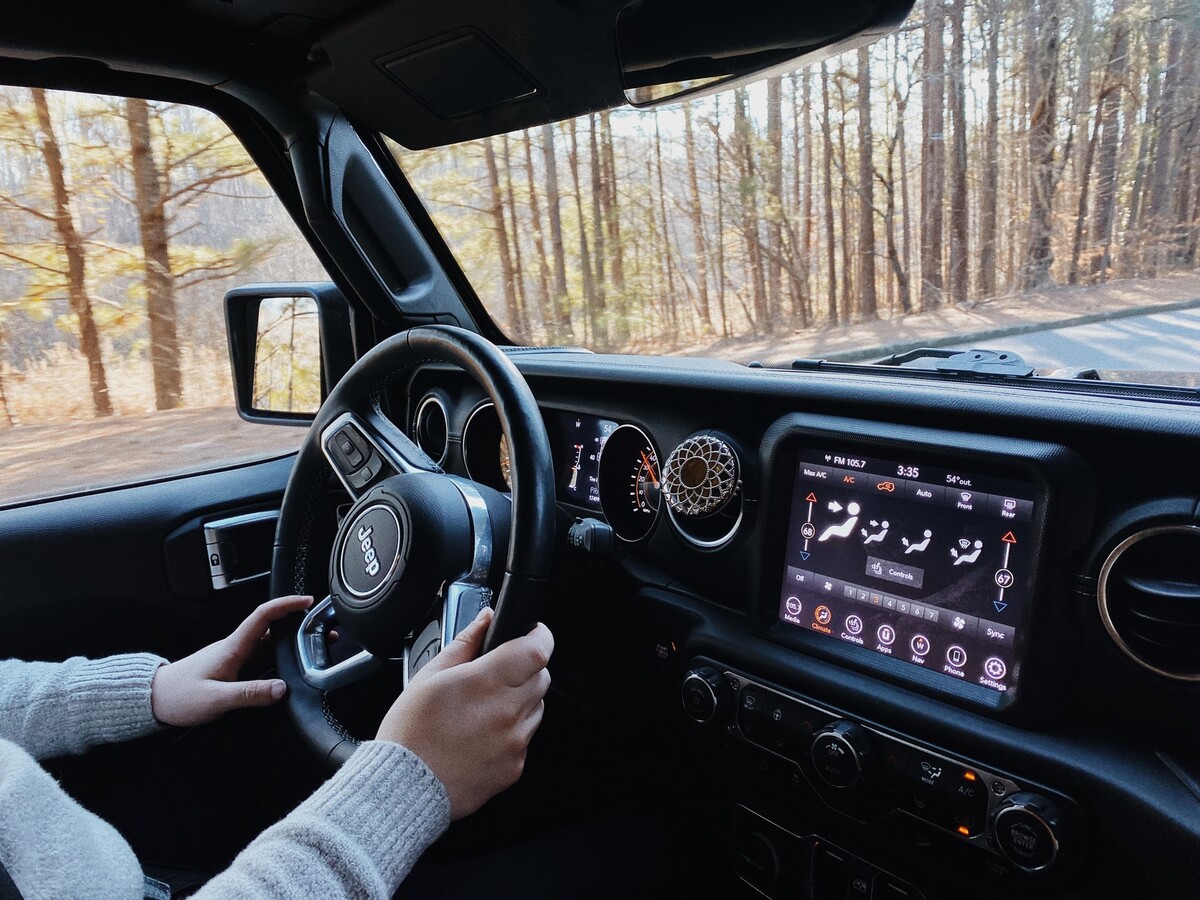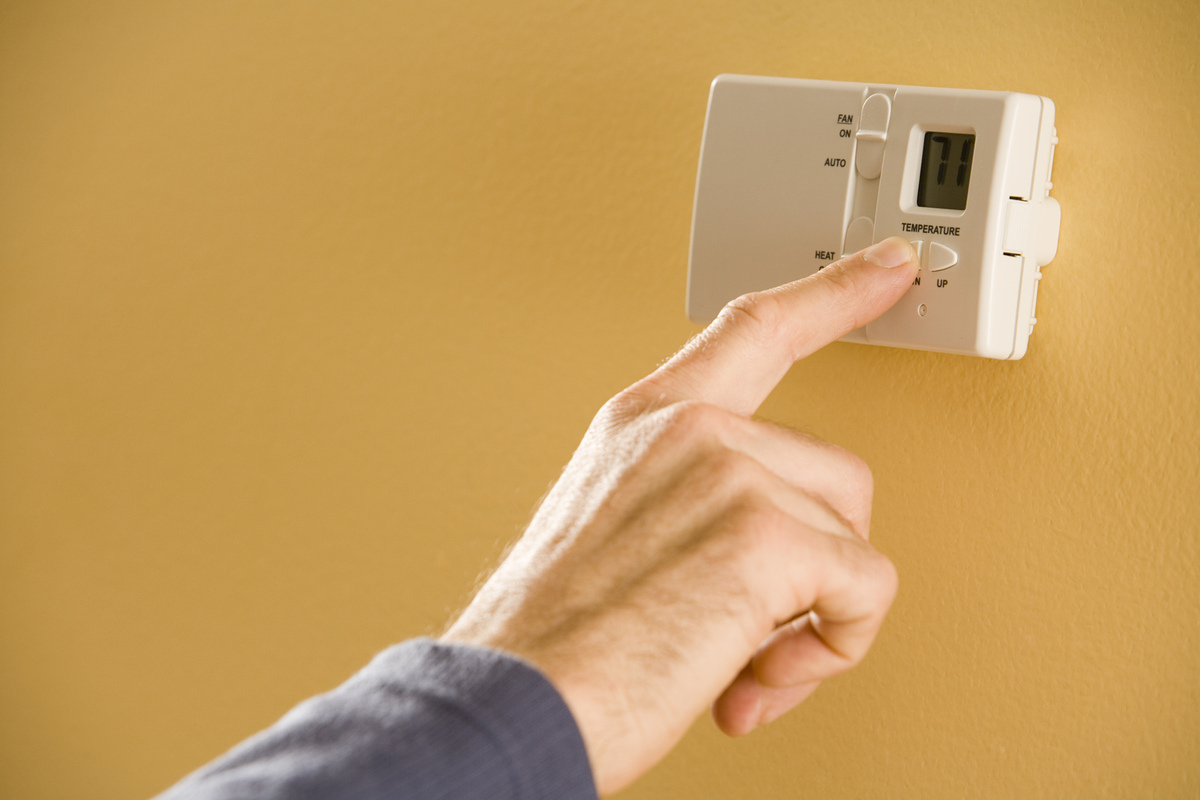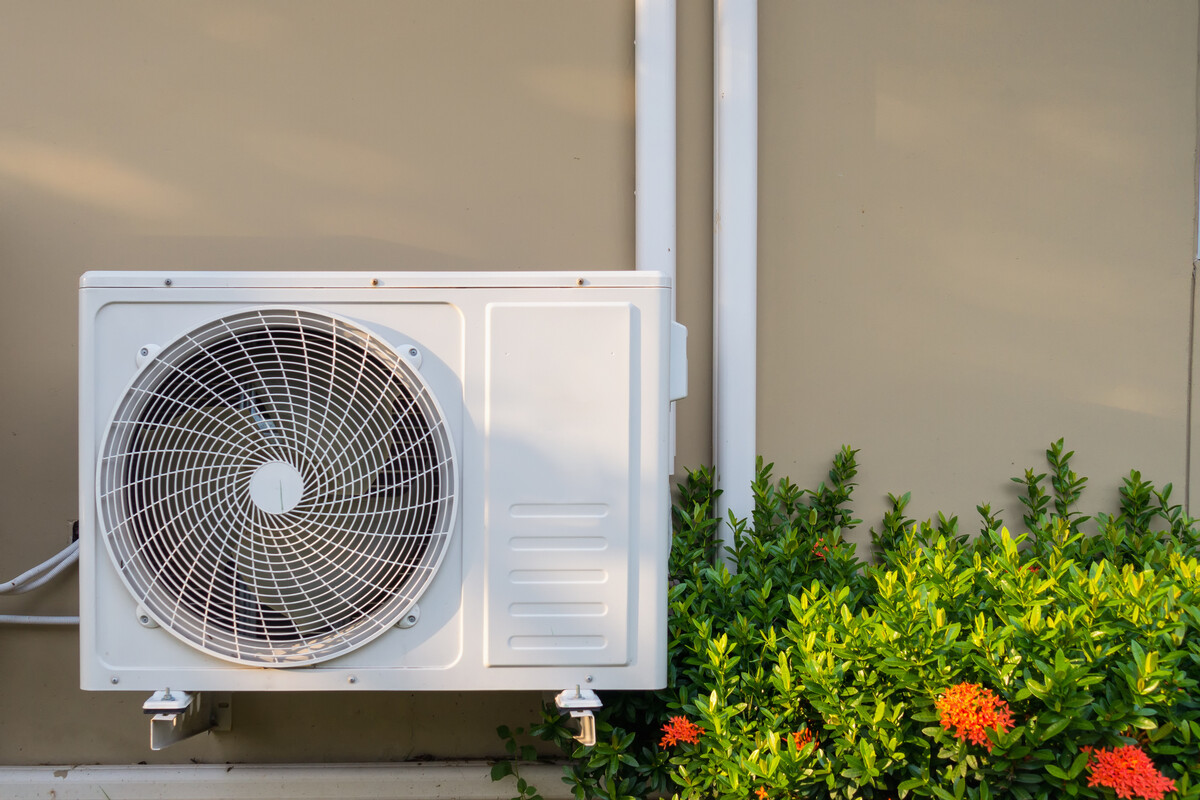Home>Home Maintenance>What Is Central Air Conditioning System
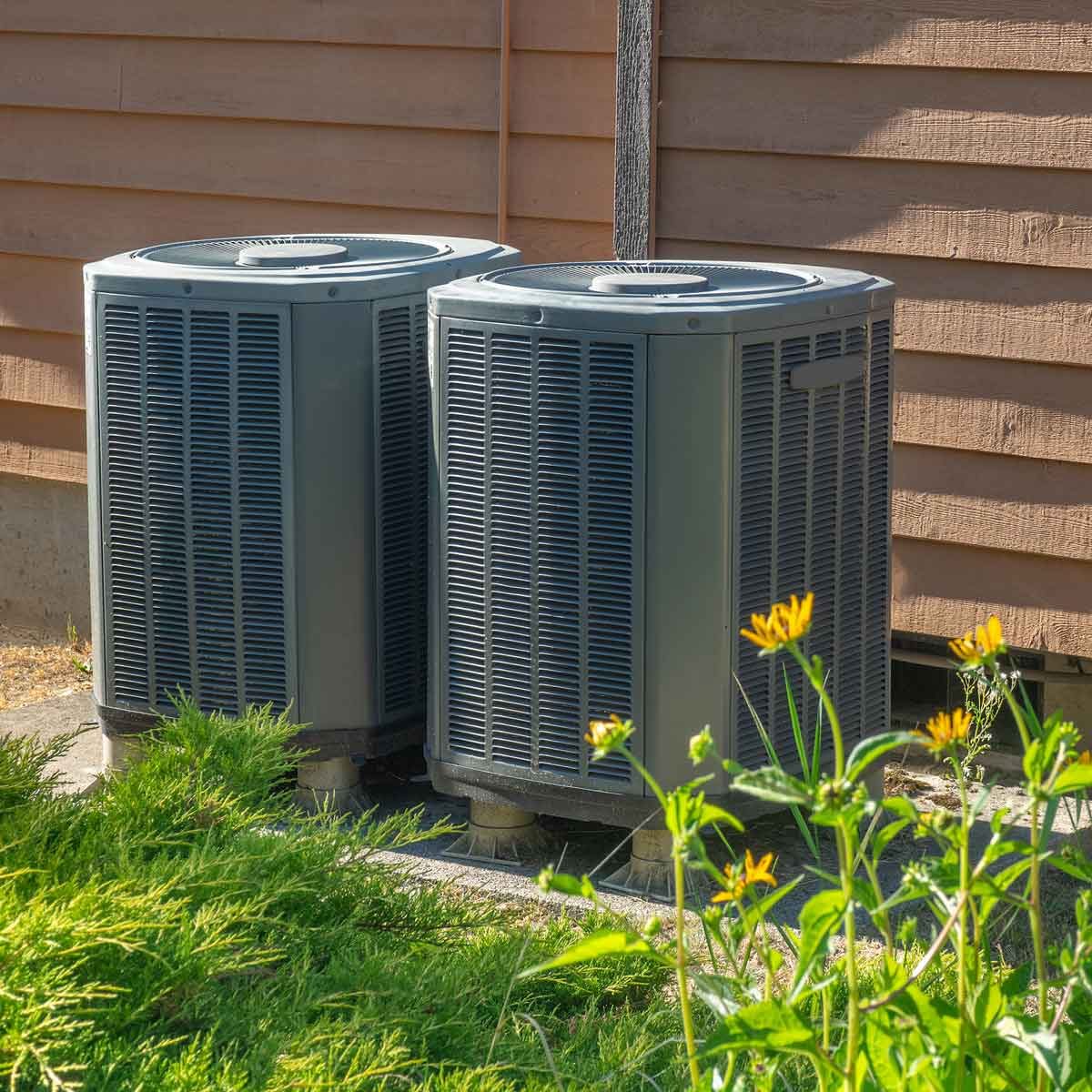

Home Maintenance
What Is Central Air Conditioning System
Modified: August 27, 2024
Learn about central air conditioning systems for efficient home maintenance. Discover the benefits, installation process, and maintenance tips to keep your HVAC system running smoothly.
(Many of the links in this article redirect to a specific reviewed product. Your purchase of these products through affiliate links helps to generate commission for Storables.com, at no extra cost. Learn more)
Introduction
Welcome to the world of central air conditioning systems! In today’s modern homes, staying cool during the scorching summer months is no longer a luxury, but a necessity. A central air conditioning system offers a convenient and efficient way to maintain a comfortable indoor temperature in your home, regardless of the heat outside.
In this article, we will take a closer look at central air conditioning systems, how they work, their components, types, advantages and disadvantages, as well as factors to consider when choosing one for your home. We will also delve into the maintenance and energy efficiency of these systems, and address common troubleshooting issues that may arise.
So, whether you’re looking to install a new central air conditioning system or simply seeking to deepen your understanding of the one you already have, this comprehensive guide has got you covered.
Key Takeaways:
- Stay cool and comfortable with a central air conditioning system, which works by cooling air through an outdoor condenser and indoor evaporator coil. Regular maintenance and professional help ensure optimal performance and energy efficiency.
- Consider factors like size, energy efficiency, and installation when choosing a central air conditioning system. Enjoy even cooling, improved air quality, and convenience, but be aware of potential maintenance and cost considerations.
Read more: How To Pick A Central Air Conditioning Unit
How Does a Central Air Conditioning System Work?
Before we dive into the inner workings of a central air conditioning system, it’s important to have a basic understanding of its primary components. A central air conditioning system consists of an outdoor unit, known as the condenser, and an indoor unit, known as the evaporator coil. These two components work together to cool and circulate air throughout your home.
The process begins with the condenser unit, which is typically located outside your home. This unit houses the compressor, condenser coil, and a fan. The compressor plays a crucial role in the cooling process by pressurizing and circulating refrigerant, a special chemical compound, through the system.
Simultaneously, the evaporator coil, located in the indoor unit, absorbs heat from the surrounding air. As warm air passes over the coil, the refrigerant inside the coil absorbs the heat and cools the air. This cooled air is then distributed throughout your home via air ducts and vents.
But how does the refrigerant work its magic? It undergoes a continuous cycle of evaporation and condensation to remove heat from your home. When the refrigerant is pressurized by the compressor, it becomes hot and transforms into a high-pressure gas. It then travels through the condenser coil, where it releases heat and condenses back into a liquid state. As the liquid refrigerant flows into the evaporator coil, it undergoes a decrease in pressure, causing it to evaporate and absorb heat, thereby cooling the air.
The evaporator coil, in conjunction with a blower fan, draws warm indoor air into the system and pushes cool air back into your living spaces. This cycle repeats until your desired temperature is achieved. The thermostat, which acts as the control center, senses the current temperature and signals the system to cycle on or off accordingly, maintaining a comfortable climate in your home.
It’s important to note that a central air conditioning system is not only responsible for cooling your home but also for dehumidifying it. As warm air passes over the evaporator coil, moisture in the air condenses on the coil’s surface, reducing the humidity levels in your home.
Now that you have a better understanding of how a central air conditioning system works, let’s explore its various components in more detail.
Components of a Central Air Conditioning System
A central air conditioning system is a complex and interconnected network of components that work together to provide cool and comfortable air throughout your home. Understanding these components will give you insight into how the system functions and facilitate better maintenance and troubleshooting. Let’s take a closer look at the key components of a central air conditioning system:
- Condenser Unit: The condenser unit is typically located outside and houses the compressor, condenser coil, and a fan. Its main purpose is to release heat from the refrigerant and convert it from a high-pressure gas to a high-pressure liquid.
- Evaporator Coil: The evaporator coil is located inside the indoor unit and is responsible for absorbing heat from the air. It cools the air by allowing the refrigerant to evaporate and draw heat from the surroundings.
- Compressor: The compressor is often referred to as the “heart” of the air conditioning system. It circulates and pressurizes the refrigerant, playing a crucial role in the cooling process. The compressor is typically housed in the condenser unit.
- Blower Fan: The blower fan is responsible for circulating the cool air throughout your home. It draws warm indoor air through the return ducts, passes it over the evaporator coil to be cooled, and then blows the cooled air back into your living spaces through the supply vents.
- Air Ducts and Vents: Air ducts are a network of tubes that distribute the cooled air from the central air conditioning system to different areas of your home. The supply vents, which are strategically placed in each room, deliver the cooled air while the return vents draw in warm air to be cooled.
- Thermostat: The thermostat serves as the control center of your central air conditioning system. It allows you to set and adjust the desired temperature in your home. When the temperature deviates from the set point, the thermostat signals the system to cycle on or off to maintain the desired temperature.
These are the primary components of a central air conditioning system. It’s important to keep them well-maintained and in good working condition to ensure optimal performance and energy efficiency. Regular maintenance, such as cleaning or replacing filters and checking refrigerant levels, can help prolong the lifespan of your system and prevent potential issues.
Now that we’ve explored the components of a central air conditioning system, let’s move on to discuss the different types available in the market.
Types of Central Air Conditioning Systems
Central air conditioning systems are available in a variety of types, each designed to suit different home setups and cooling needs. Let’s explore some of the most common types:
- Split System: A split system is the most common type of central air conditioning system. It consists of an outdoor unit (containing the condenser and compressor) and an indoor unit (housing the evaporator coil and blower fan). The two units are connected by refrigerant lines and work together to cool and circulate air throughout your home. Split systems can be further classified as single-stage, two-stage, or variable-stage, depending on the compressor’s capabilities to control cooling output.
- Package System: In a package system, all the components of the central air conditioning system are housed in a single unit. This unit is typically installed on the roof or on the ground outside the home. Package systems are commonly used in buildings where space is limited or when it is not feasible to install indoor units.
- Heat Pump: A heat pump is a type of central air conditioning system that is capable of both cooling and heating your home. It operates by reversing the refrigeration cycle, allowing it to extract heat from the outside air and bring it inside during colder months. Heat pump systems are particularly beneficial in areas with mild winters.
- Ductless Mini-Split: Ductless mini-split systems are an alternative to traditional central air conditioning systems that require air ducts. These systems consist of an outdoor unit and one or more indoor units, connected by refrigerant lines. Each indoor unit is capable of cooling a specific area or room, making them a great option for homes without existing ductwork.
- Geothermal System: Geothermal systems utilize the stable temperature of the ground to cool and heat your home. They extract heat from the ground during the summer to cool your home and extract heat from your home during the winter to warm it. Geothermal systems are highly energy-efficient but require a significant upfront investment.
When choosing a central air conditioning system type, consider factors such as the size and layout of your home, energy efficiency requirements, and budget. Consulting with a professional HVAC technician can help you determine the best system for your specific needs.
Now that we’ve explored the different types of central air conditioning systems, let’s delve into the advantages and disadvantages of these systems.
Advantages of Central Air Conditioning Systems
Central air conditioning systems offer several advantages that make them a popular cooling choice for many homeowners. Let’s explore some of the key benefits:
- Even Cooling: Central air conditioning systems provide consistent and even cooling throughout your entire home. Unlike window units or portable air conditioners, which may only cool a specific area, central systems distribute cool air through air ducts and vents, ensuring a comfortable temperature in every room.
- Noisy-Free Operation: With a central air conditioning system, the noisy components, such as the compressor and condenser, are located outside your home. This means you can enjoy the cool comfort without the disruption of loud noise inside your living spaces.
- Better Indoor Air Quality: Central air conditioning systems include air filters that help remove dust, pollen, and other allergens from the air. This can greatly improve indoor air quality and provide relief for individuals with respiratory conditions or allergies.
- Convenience and Control: Central air conditioning systems are controlled by a thermostat, allowing you to set and maintain your desired temperature easily. Some advanced thermostats even offer smart features, enabling you to control your system remotely through your smartphone or home automation system.
- Improved Energy Efficiency: A properly sized and well-maintained central air conditioning system can be more energy-efficient compared to using several window units or portable air conditioners. Central systems are designed to cool the entire home, allowing for better energy management and potentially lowering your energy bills.
- Less Obstructed View: Unlike window units, which can obstruct your view and limit natural light, central air conditioning systems remain outside or in dedicated indoor units. This allows you to enjoy unobstructed views from your windows and allows for more design flexibility in your home.
These advantages highlight why central air conditioning systems are a popular choice for homeowners who prioritize consistent cooling, convenience, and energy efficiency. However, it’s essential to consider the potential disadvantages as well. Let’s explore them next.
Disadvantages of Central Air Conditioning Systems
While central air conditioning systems offer numerous benefits, it’s important to be aware of their potential drawbacks. Let’s explore some of the disadvantages:
- Higher Initial Cost: Central air conditioning systems can be more expensive to install compared to other cooling options, such as window units or portable air conditioners. This is due to the costs associated with purchasing and installing the indoor and outdoor units, as well as the necessary ductwork.
- Ductwork Requirements: Central air conditioning systems rely on ductwork to distribute cool air throughout the home. If your home does not have existing ductwork, the installation process can be more complex and costly. Additionally, poorly insulated or leaky ducts can result in energy loss and reduced efficiency.
- Maintenance and Repairs: Central air conditioning systems require regular maintenance to ensure optimal performance. This includes cleaning or replacing filters, checking refrigerant levels, and inspecting the system for any issues. Additionally, if a problem does occur, repairs can be more costly compared to smaller cooling units.
- Energy Consumption: Running a central air conditioning system can contribute to higher energy consumption compared to smaller cooling units. However, this can be mitigated by choosing an energy-efficient system, proper insulation, and regular maintenance to ensure the system operates efficiently.
- Difficulty in Zoning: Central air conditioning systems typically cool the entire home at once, making it challenging to control the temperature in specific zones or rooms. Zoning systems can be installed to address this issue, but they can add to the installation and operational costs.
- Limited Cooling during Power Outages: Central air conditioning systems rely on electricity to function. During a power outage, the system will not operate, leaving you without cooling options. However, backup generators or alternative cooling solutions can help mitigate this inconvenience.
While these disadvantages should be taken into consideration, they should not overshadow the benefits that central air conditioning systems offer. By conducting proper research, consulting with professionals, and regular maintenance, you can ensure that the advantages far outweigh the disadvantages for your specific needs.
Now that we’ve explored the advantages and disadvantages, let’s move on to the factors you should consider when choosing a central air conditioning system for your home.
Regular maintenance of your central air conditioning system, including cleaning or replacing filters, checking for leaks, and scheduling professional inspections, can help ensure efficient operation and extend the lifespan of the system.
Factors to Consider when Choosing a Central Air Conditioning System
Choosing the right central air conditioning system is essential to ensure optimal cooling and comfort in your home. Here are some key factors to consider when making your decision:
- Size and Capacity: The size and capacity of the system should match the cooling needs of your home. An oversized system may short cycle and result in inefficient operation, while an undersized unit may struggle to cool your home adequately. Consult with an HVAC professional to determine the appropriate size based on factors like square footage, insulation, and the climate of your area.
- Energy Efficiency: Look for air conditioning systems with high energy efficiency ratings. Central air conditioning systems with ENERGY STAR certification are known for their energy-saving features and can help reduce your energy consumption and lower your utility bills. Consider SEER (Seasonal Energy Efficiency Ratio) ratings when comparing different models.
- Installation Considerations: Evaluate your home’s existing infrastructure, such as the availability and condition of ductwork, as well as space constraints for installing indoor and outdoor units. This assessment will help determine whether a split system, package system, or ductless mini-split system is the most suitable choice for your home.
- Budget: Determine your budget for purchasing and installing a central air conditioning system. Consider the initial costs, ongoing maintenance expenses, and potential long-term energy savings. Remember that investing in a more energy-efficient system may yield greater savings over time.
- Noise Levels: Consider the noise levels of the system, particularly if you have bedrooms or living spaces near the outdoor unit. Look for systems with lower decibel ratings, or consider noise-reducing features available in some models.
- Additional Features: Explore additional features that may enhance your comfort or convenience. This could include programmable thermostats, smart home integration, humidity control, or air purification systems. These extras can add to the upfront cost but may provide long-term benefits and improved indoor air quality.
When choosing a central air conditioning system, it’s crucial to consult with HVAC professionals who can assess your specific needs and recommend the most suitable options. They can perform load calculations, evaluate your home’s infrastructure, and provide guidance on the best system for your budget and requirements.
Once you have selected and installed a central air conditioning system, proper maintenance and upkeep are essential to ensure its longevity and optimal performance. Let’s explore maintenance tips and energy efficiency considerations next.
Maintenance and Upkeep of Central Air Conditioning Systems
Proper maintenance and upkeep are crucial for ensuring the longevity and efficient operation of your central air conditioning system. By following these maintenance tips, you can optimize performance, prevent major issues, and extend the lifespan of your system:
- Regular Filter Cleaning or Replacement: Clean or replace the air filters regularly, typically every one to three months, or as recommended by the manufacturer. Clogged filters restrict airflow and reduce the system’s efficiency. Clean filters also contribute to improved indoor air quality by removing dust, pollen, and other pollutants.
- Clean the Outdoor Unit: Regularly clean debris, leaves, and dirt that may accumulate around the outdoor unit. Clear any obstructions to ensure proper airflow and prevent the system from working harder than necessary.
- Check and Clean the Evaporator Coil: Over time, the evaporator coil may collect dust and dirt, reducing its efficiency. Inspect the coil annually and clean it if necessary. A professional technician can perform a more thorough cleaning if required.
- Inspect and Clean Air Ducts: Periodically inspect air ducts for any leaks, blockages, or damage. Clean the ductwork if there is a significant accumulation of dust or debris. Sealing any leaks can help improve energy efficiency and ensure proper airflow to all areas of your home.
- Check and Maintain Refrigerant Levels: Insufficient or excessive refrigerant can impact the system’s performance. Have a professional technician check and adjust the refrigerant levels as needed to ensure optimal cooling efficiency.
- Keep the Thermostat Functioning Properly: Regularly check and calibrate your thermostat to ensure accurate temperature readings and proper system operation. Replace batteries if applicable to prevent any disruptions in functionality.
- Schedule Professional Maintenance: Consider scheduling annual professional maintenance for your central air conditioning system. HVAC technicians can perform in-depth inspections, tune-ups, and address any potential issues before they escalate.
By following these maintenance tips and scheduling professional inspections, you can ensure that your central air conditioning system operates efficiently, provides optimal cooling comfort, and avoids unnecessary repairs or breakdowns.
In addition to maintenance, it’s important to consider energy efficiency to minimize your environmental impact and reduce utility costs. Let’s explore energy efficiency considerations for central air conditioning systems next.
Energy Efficiency of Central Air Conditioning Systems
Energy efficiency is an important consideration when it comes to central air conditioning systems. An energy-efficient system not only helps reduce your environmental footprint but can also result in significant cost savings on your utility bills. Here are some key factors to consider for improving the energy efficiency of your central air conditioning system:
- SEER Rating: SEER (Seasonal Energy Efficiency Ratio) is a measure of how efficiently an air conditioning system operates over an entire cooling season. Look for systems with higher SEER ratings, as they are more energy efficient and can help lower your energy consumption and costs.
- Proper Sizing: Choosing a system that is correctly sized for your home is essential for optimal energy efficiency. An oversized system will cycle on and off too frequently, leading to inefficient operation, while an undersized system may struggle to cool your home adequately. Consult with an HVAC professional to determine the appropriate size based on factors like square footage, insulation, and climate.
- Regular Maintenance: Regular maintenance is key to maintaining energy efficiency. Clean or replace air filters regularly, as dirty filters restrict airflow and reduce efficiency. Keep the outdoor condenser unit clean from debris and ensure the evaporator coil is free of dirt and dust. Schedule annual professional maintenance to inspect and tune up your system for optimal performance.
- Programmable Thermostat: Installing a programmable thermostat allows you to set different temperature schedules based on your daily routines. You can program the system to automatically adjust the temperature when you’re away from home or sleeping, reducing unnecessary energy consumption.
- Zoning Systems: Zoning systems divide your home into different temperature zones, allowing you to cool only the occupied areas. This can help optimize energy usage by avoiding the need to cool the entire home when it’s not necessary.
- Insulation and Weatherstripping: Proper insulation in your home helps prevent cool air from escaping and hot air from entering, reducing the workload on your central air conditioning system. Make sure your home is well-insulated, and use weatherstripping to seal any gaps around windows and doors to prevent air leaks.
- Smart Home Integration: Smart thermostats and home automation systems allow you to control and monitor your central air conditioning system remotely. You can adjust the temperature settings based on occupancy, weather conditions, and energy-saving recommendations, optimizing efficiency and reducing energy wastage.
By considering these factors and implementing energy-saving practices, you can maximize the energy efficiency of your central air conditioning system, reduce your environmental impact, and save on energy costs.
However, if you encounter any issues or experiencing a decrease in energy efficiency, it’s essential to troubleshoot and address them promptly. Let’s explore some common troubleshooting tips for central air conditioning systems next.
Read more: How Does Home Central Air Conditioning Work
Troubleshooting Common Issues with Central Air Conditioning Systems
Central air conditioning systems, like any complex equipment, can encounter issues from time to time. Understanding common problems and troubleshooting techniques can help you address minor issues and potentially avoid costly repairs. Here are some common problems you may encounter with your central air conditioning system and steps to troubleshoot them:
- Insufficient Cooling: If your home is not cooling as expected, check the thermostat settings to ensure they are set correctly. Additionally, check and clean the air filters, as dirty filters can restrict airflow and reduce cooling efficiency. If the issue persists, it may be due to a faulty compressor or refrigerant leak, which requires professional assistance.
- Inadequate Airflow: If you notice weak airflow from the vents, check the air filters and clean or replace them if dirty. Additionally, inspect the outdoor unit for any obstructions that may be blocking proper airflow, such as debris or vegetation. Ensure that the air ducts are free from any leaks or blockages. If the problem persists, it could be due to a faulty blower motor or issues with the ductwork, which may require professional attention.
- Strange Noises: Unusual noises coming from your central air conditioning system often indicate a problem. If you hear grinding or squealing sounds, it may be due to a faulty motor or belt. Rattling noises can indicate loose components, while a buzzing sound may be caused by electrical issues. In any of these cases, it is recommended to have a professional HVAC technician diagnose and repair the issue to avoid further damage.
- Refrigerant Leaks: If you notice a decrease in cooling efficiency or ice buildup on the indoor unit, it could be a sign of a refrigerant leak. Refrigerant leaks not only affect cooling performance but can also potentially harm the environment. It is essential to have a certified HVAC technician locate and repair the leak, as well as recharge the system with the proper amount of refrigerant.
- Overheating: If your central air conditioning system is overheating or frequently shutting off, it may be due to a dirty or clogged outdoor unit. Check for debris, such as leaves or dirt, and ensure proper airflow around the unit. Clean the outdoor unit carefully, but if the problem persists, it is advisable to consult a professional technician to inspect and diagnose any underlying issues.
- Thermostat Issues: If the thermostat is not functioning correctly, it can affect the operation of your central air conditioning system. Check the batteries and replace them if necessary. Ensure that the thermostat is free from any dust or debris that may interfere with its operation. If the thermostat continues to malfunction, it may need to be replaced or recalibrated by a professional.
It is important to note that while basic troubleshooting steps can be helpful for minor issues, it is recommended to seek professional assistance for more complex problems or if you are unsure about performing any troubleshooting procedures.
By promptly addressing and troubleshooting problems with your central air conditioning system, you can ensure efficient operation, extend its lifespan, and maintain a comfortable indoor environment.
Now that we’ve covered troubleshooting, let’s wrap up our discussion on central air conditioning systems.
Conclusion
Central air conditioning systems offer a convenient and efficient way to keep your home cool and comfortable during the hot summer months. Understanding how these systems work, their components, types, advantages, and disadvantages is essential in making an informed decision when selecting and maintaining a central air conditioning system for your home.
We explored the inner workings of central air conditioning systems, which consist of an outdoor condenser unit and an indoor evaporator coil, working together to cool and circulate air throughout your home. We discussed the importance of components such as the compressor, blower fan, air ducts, and thermostat in achieving optimal performance.
It is important to consider factors such as size and capacity, energy efficiency, installation requirements, budget, noise levels, and additional features when choosing a central air conditioning system. Professional assistance can help determine the right system based on your home’s specific needs.
We also discussed the advantages of central air conditioning systems, including even cooling, noise-free operation, improved indoor air quality, convenience and control, energy efficiency, and unobstructed views. However, it’s important to be aware of the potential disadvantages, such as higher initial costs, maintenance requirements, energy consumption, and limited zone control.
To maintain the longevity and efficiency of your central air conditioning system, regular maintenance is essential. Proper upkeep includes cleaning or replacing air filters, inspecting and cleaning components such as the evaporator coil and air ducts, and scheduling professional maintenance inspections. These measures can help optimize performance, improve energy efficiency, and prevent major issues.
We discussed the importance of energy efficiency in central air conditioning systems and provided tips such as choosing systems with high SEER ratings, proper sizing, regular maintenance, programmable thermostats, zoning systems, insulation, and smart home integration to maximize efficiency and reduce energy consumption.
Lastly, we covered common troubleshooting tips for issues such as insufficient cooling, inadequate airflow, strange noises, refrigerant leaks, overheating, and thermostat problems. While basic troubleshooting can be helpful, professional assistance is recommended for more complex issues or if you are unsure about performing any procedures.
In conclusion, central air conditioning systems offer exceptional convenience and comfort for homeowners, but proper selection, maintenance, and troubleshooting are crucial for optimal performance. By considering all the factors discussed and following the maintenance and troubleshooting guidelines, you can enjoy a cool and comfortable home while maximizing energy efficiency and minimizing potential problems.
Remember, for any major issues or concerns with your central air conditioning system, it is always best to consult with HVAC professionals who can provide expert advice and assistance.
Frequently Asked Questions about What Is Central Air Conditioning System
Was this page helpful?
At Storables.com, we guarantee accurate and reliable information. Our content, validated by Expert Board Contributors, is crafted following stringent Editorial Policies. We're committed to providing you with well-researched, expert-backed insights for all your informational needs.
